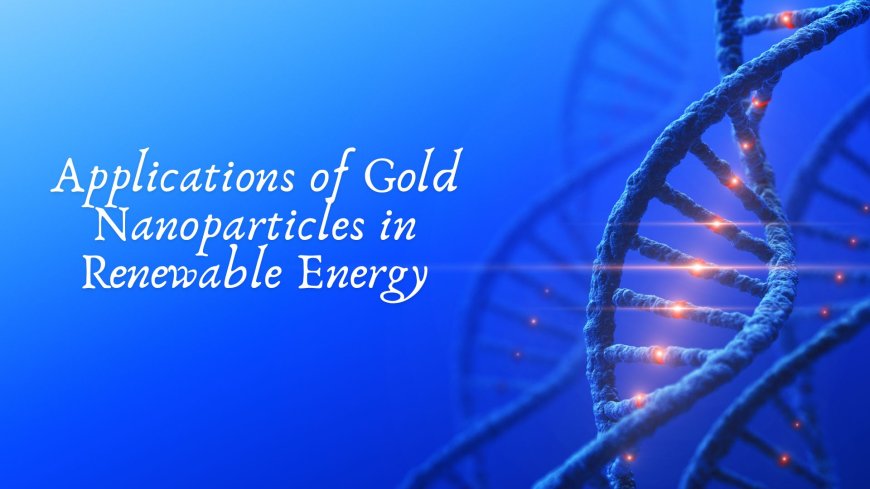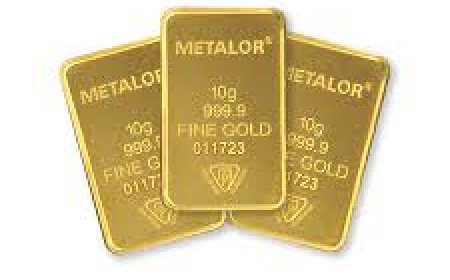Applications of Gold Nanoparticles in Renewable Energy
Gold nanoparticles are no longer just laboratory curiosities—they are pivotal components in the transformation of the global energy landscape

Introduction
Gold nanoparticles (AuNPs) have garnered significant attention in recent years due to their unique physicochemical properties. Unlike their bulk counterpart, these nanoparticles exhibit size-dependent optical, electronic, and catalytic characteristics, making them highly versatile for cutting-edge applications. One of the most promising arenas for gold nanoparticles is renewable energy, where they contribute to enhancing the efficiency and performance of sustainable technologies. As the world shifts towards cleaner energy alternatives, gold nanoparticles are proving to be vital tools in the development of next-generation energy systems.
Gold Nanoparticles in Photovoltaic Devices
Enhancing Light Absorption
Photovoltaic cells convert sunlight into electricity, and their efficiency depends largely on how effectively they absorb light. Gold nanoparticles can be integrated into solar cells to enhance this absorption through localized surface plasmon resonance (LSPR). When light interacts with AuNPs, it causes the electrons to oscillate, concentrating light into nearby semiconductors. This process increases the overall photocurrent and thus the efficiency of solar panels.
Plasmonic Solar Cells
Plasmonic solar cells are a new class of photovoltaics that leverage plasmonic effects to boost energy capture. Gold nanoparticles are embedded in thin-film solar cells to scatter light and increase its path length within the absorbing layer. This strategy compensates for thinner semiconductor layers, reducing material costs while maintaining high energy yields.
Gold Nanoparticles in Hydrogen Production
Photocatalytic Water Splitting
Hydrogen is a clean fuel with immense potential, but producing it sustainably remains a challenge. Gold nanoparticles, when supported on semiconductor materials such as TiO? or ZnO, can significantly improve photocatalytic water splitting. The LSPR effect of AuNPs helps generate hot electrons under sunlight, which enhances the separation of water molecules into hydrogen and oxygen.
Efficiency and Selectivity
One of the unique advantages of using gold nanoparticles in photocatalysis is their ability to selectively adsorb and activate water molecules. This results in higher hydrogen production rates and better stability of the catalyst over time. Gold-based nanocatalysts also exhibit remarkable resistance to corrosion, making them durable for long-term use.
Gold Nanoparticles in Fuel Cells
Electrocatalytic Activity
Gold nanoparticles serve as electrocatalysts in various types of fuel cells, including proton exchange membrane (PEM) and direct alcohol fuel cells. While platinum is traditionally used for these applications, gold offers a corrosion-resistant alternative, especially under alkaline conditions. AuNPs can facilitate the oxygen reduction reaction (ORR) and alcohol oxidation, essential for fuel cell operation.
Cost and Stability
Though gold is a precious metal, using it in nanoparticle form reduces the overall quantity needed, making it more cost-effective. Furthermore, gold nanoparticles demonstrate high stability, resisting degradation and maintaining catalytic performance over timecrucial for the longevity of fuel cells in renewable energy systems.
Gold Nanoparticles in Thermoelectric Energy Conversion
Thermoelectric materials convert heat into electricitya capability that can recover waste heat from industrial or solar processes. Gold nanoparticles, when integrated into polymer or inorganic matrices, can enhance thermal conductivity and Seebeck coefficients, thereby improving thermoelectric efficiency.
Hybrid Nanocomposites
By embedding AuNPs in thermoelectric composites, researchers have achieved better control over phonon scattering and charge carrier mobility. These hybrid materials are promising candidates for efficient heat-to-electricity conversion systems in renewable power plants.
Gold Nanoparticles in Energy Storage
Supercapacitors and Batteries
Gold nanoparticles can improve the performance of energy storage devices by enhancing charge transfer and conductivity. In supercapacitors, they contribute to faster charge-discharge cycles, while in lithium-ion batteries, AuNPs improve the anode/cathode interfaces and enhance overall efficiency.
Stability and Cycle Life
One of the major advantages of incorporating gold nanoparticles in batteries is the enhancement of cycle stability. Golds chemical inertness ensures that electrode materials remain active for longer durations, making energy storage systems more reliable and durable.
Environmental and Economic Considerations
Despite their high cost, gold nanoparticles are often used in minimal quantities due to their efficiency at the nanoscale. Additionally, ongoing research is focusing on green synthesis methods, including the use of plant extracts or microbial processes, to reduce the environmental footprint of AuNP production. The recyclability and stability of gold also make it a sustainable choice for long-term applications in renewable energy systems.
Conclusion
Gold nanoparticles are no longer just laboratory curiositiesthey are pivotal components in the transformation of the global energy landscape. Their extraordinary optical, electronic, and catalytic properties make them suitable for a wide range of renewable energy technologies, from solar cells and hydrogen production to fuel cells and energy storage systems.
As researchers continue to explore innovative uses and cost-effective synthesis methods, gold nanoparticles are expected to play an increasingly critical role in making renewable energy more efficient, accessible, and sustainable. In the quest for a greener planet, these tiny particles may just hold the golden key to our energy future.






































